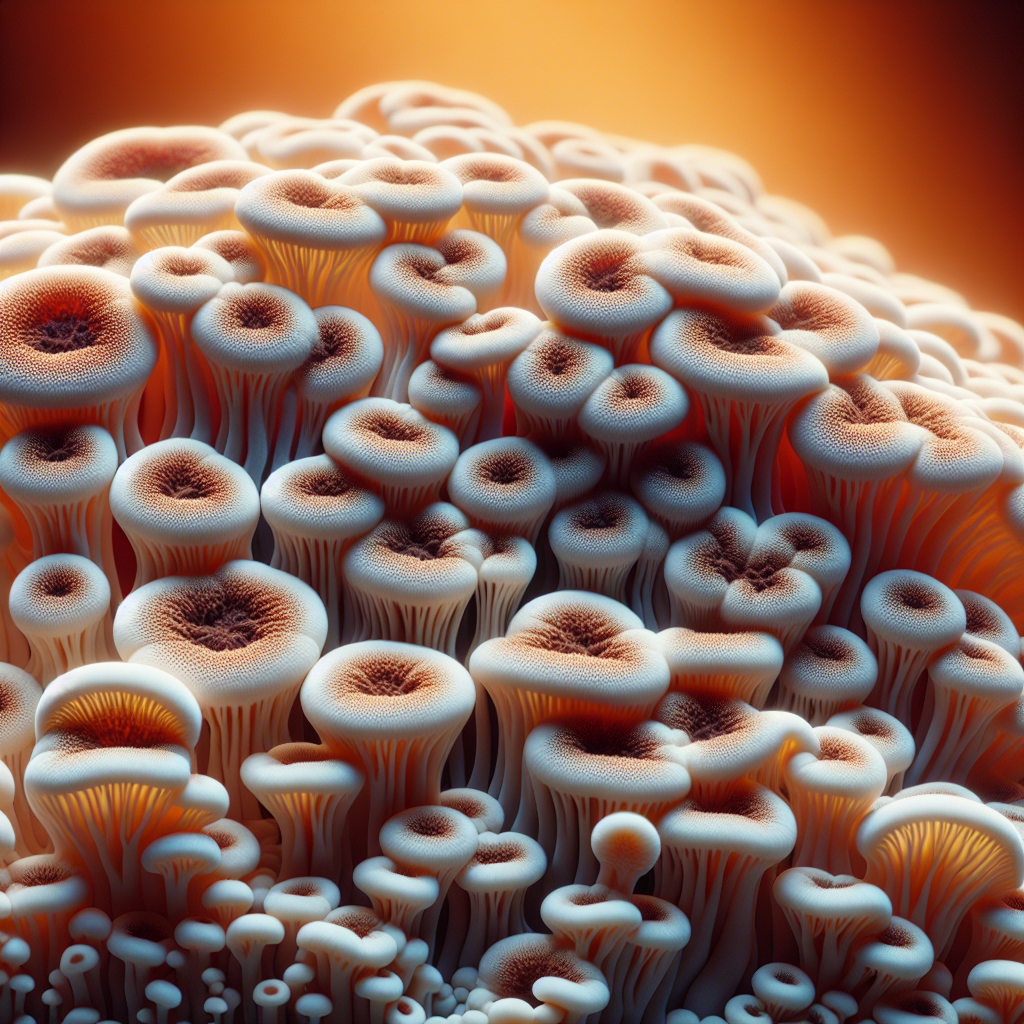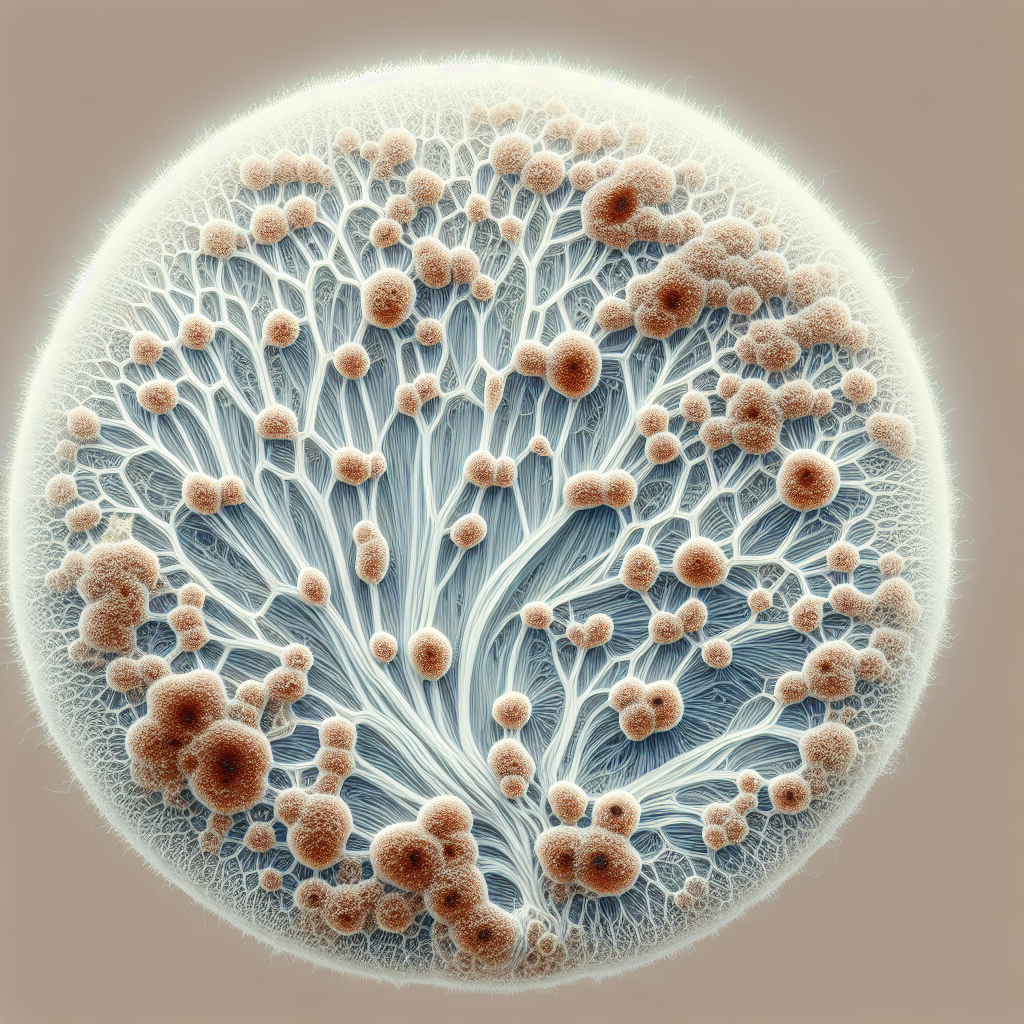In the fascinating world of Mycology, you may often encounter irregularities in your studies, one of which is the appearance of brown spots on mycelium. The article, “Understanding the Causes of Brown Spots on Mycelium” provides an in-depth analysis into the root causes and implications of these curious blemishes. By wielding expert knowledge and advanced research tools, this comprehensive study sheds light on this specific fungal phenomenon, investigating potential causes and impacts, and ultimately empowering you to better comprehend and navigate the spheres of Mycology.

Understanding Mycelium
Mycelium represents the vegetative body of fungi and consists of a network of fine, white, thread-like structures known as hyphae. Mycelium serves as the basis of mushrooms and is crucial in contributing to the global carbon cycle. By gaining a deeper understanding of mycelium, you can explore its essential functions, distinctive features, potential health threats, and overall ecosystem relevance.
What is Mycelium
Mycelium is the vegetative part of a fungus, consisting of a complex, interconnected network of filamentous hyphae. Typically found in soil and other organic matter, mycelium forms the foundation from which fruiting bodies, or the fungi we commonly recognize as mushrooms, grow. This branching network is vital in distributing nutrients, aiding decomposition and fostering a variety of ecological processes.
Roles and Functions of Mycelium
The primary role of mycelium is to extract, transport, and share nutrients. This process allows the fungi to grow and when conditions are right, to produce mushrooms. This nutrient exchange system simultaneously aids in the decomposition of organic material, promoting soil health and fertility. Additionally, mycelium forms symbiotic relationships with various plant species, directly supporting the health and productivity of ecosystems globally.
General Features of Mycelium
Mycelium is characterized by its web-like structure, encompassing vast networks of hyphae that dig deep into the soil. Generally white in color, it has a cottony or filamentous texture and may exhibit diverse growth patterns depending on the environmental conditions and specific fungal species. These growth patterns can provide valuable insight into overall mycelium health.
Normal Appearance of Healthy Mycelium
Understanding and identifying the characteristics of healthy mycelium are crucial to maintaining its health and preventing possible infections or diseases.
Color of Healthy Mycelium
Most commonly, healthy mycelium appears white or off-white. Distinct changes in color can signify potential problems, including bouts of contamination, poor environmental conditions, or other health-related issues.
Texture of Healthy Mycelium
The texture of a healthy mycelium is typically cottony or filamentous, sometimes characterized as similar to a spider web. Any significant changes in texture can suggest problems with mycelium health or deviations in environmental conditions.
Growth Patterns of Healthy Mycelium
Healthy mycelium exhibits consistent and robust growth patterns. It should spread evenly and densely across the growth medium or within the substrate. Unusual or inconsistent growth can often be an indicator of potential health issues.
Identifying Brown Spots on Mycelium
One issue to be vigilant for when monitoring mycelium health is the presence of brown spots. These spots can occur due to a variety of causes, such as contaminations or unfavorable conditions, and can compromise the growth and function of mycelium.
Characteristics of Brown Spots
Brown spots on mycelium are often darker than the surrounding area and may appear dull, moist, or even to have a tar-like texture. They can differ considerably in their specific characteristics depending on the exact cause of the issues they represent.
Sizes and Shapes of Brown Spots
Brown spots can emerge in various sizes and shapes. They might be minute, barely noticeable splotches or significantly larger patches. The shape of these spots can range from circular to irregular, varying extensively based on the underlying cause.
Locations of Brown Spots on Mycelium
Brown spots can appear anywhere on the mycelium, either on the surface or within the substrate itself. The location of these spots can offer important indications about their cause and necessary responses.

Causes of Brown Spots in Mycelium
understanding what causes brown spots on mycelium is crucial to formulating appropriate prevention and treatment strategies. These causes typically pertain to either environmental or biological factors.
Overview of Possible Causes
Brown spots on mycelium can be caused by a range of issues, including bacterial or fungal infections, changes in lighting conditions, fluctuations in temperature, contamination, suboptimal watering practices, genetic predisposal, or other factors impacting mycelium health.
Biological Causes
Biological causes of brown spots on mycelium encompass issues such as infections, diseases, or fungal interactions. Even genetic factors can play a role, with certain strains of fungi more susceptible to developing brown spots than others.
Environmental Causes
Environmental causes refer to external conditions that can contribute to the formation of brown spots on mycelium. These can include factors such as lighting conditions, watering practices, temperature extremes, and environmental contaminants.
Biological Causes of Brown Spots on Mycelium
Understanding biological causes of brown spots on mycelium can aid in diagnosing issues and establishing effective treatments and preventive strategies.
Infections and Diseases
Bacterial infections, pathogenic fungi, viruses and various diseases can lead to the formation of brown spots on mycelium. Identifying the specific infectious agent or disease is vital for an appropriate treatment plan.
Genetic Factors
Genetics can predispose certain fungal species to experience discoloration or other health issues. In these instances, the expression of brown spots could be an innate trait of a specific fungal strain.
Bacteria and Fungal Interactions
Bacteria-fungus interactions are complex and can often result in brown spots on mycelium. Certain bacterial species can hinder mycelium growth, disrupt nutrient absorption processes, or lead to the production of pigments that may cause brown spots.
Environmental Causes of Brown Spots
A thorough understanding of the environmental factors that contribute to brown spots on mycelium can enable you to maintain an ideal environment for mycelium growth and well-being.
Insufficient Lighting Conditions
Suitable lighting conditions are critical for mycelium growth. Too much or too little light can lead to stress, reducing the mycelium’s overall health and potentially resulting in brown spots.
Improper Watering Practices
Mycelium requires a specific moisture level for optimal growth. Over or under-watering can negatively affect the health of mycelium and contribute to the formation of brown spots.
Temperature Extremes
Temperature significantly influences the growth and health of mycelium. Extreme temperatures, either too hot or too cold, can stress the mycelium and induce the appearance of brown spots.
Contaminants in the Environment
Various environmental contaminants, such as chemicals or pollutants, can penetrate the mycelium, causing harm and facilitating the formation of brown spots.
Investigating Brown Spots
When brown spots are identified on your mycelium, it is important to seek a thorough investigation to determine the cause and devise an appropriate response.
Observing Changes Over Time
Resolving whether brown spots are an immediate concern often involves monitoring changes over time. Assessing the growth, spread, or color transformation of these spots can provide insight into what might be causing them.
Documenting the Brown Spots
Documenting occurrences, changes, and developments regarding the brown spots can prove to be invaluable. Record their initial appearance, observe any changes in size, shape, color, or texture, and keep track of any manipulations or treatments applied.
Seeking Expert Advice
In some cases, it might be necessary to seek professional advice. If changes are occurring rapidly, affecting the overall health of the mycelium or if attempts to resolve the issue have been unsuccessful, expert guidance should be sought.
Preventing Brown Spots on Mycelium
Preventing the occurrence of brown spots might involve maintaining appropriate environmental conditions, ensuring mycelium health, and avoiding contamination.
Maintaining Appropriate Environmental Conditions
Ensure the environment in which your mycelium grows is conducive to its well-being. This involves maintaining appropriate lighting, temperature, and moisture levels, among other factors.
Ensuring Mycelium Health
Promoting the health of your mycelium – through nutrient supplementation or the avoidance of stressors – can be instrumental in preventing brown spots. A healthy mycelium is more resilient and resistant to infections, diseases, or bio-environmental stressors.
Preventing Contamination
Contamination is a common cause of brown spots. Implement measures to prevent contamination, such as observing strict hygiene practices, utilizing sterilized growth media, or employing various biological isolation techniques.
Treating Brown Spots on Mycelium
Treatment methods for brown spots on mycelium often depend on the cause. In most cases, adjustments in biological factors or environmental conditions might be necessary.
Appropriate Treatments for Biological Factors
Treatment for biological causes may involve the use of fungicides, antibacterial agents, or other medicines, while sometimes a simple change in care regimen might be sufficient.
Strategies for Environmental Adjustments
Adjusting environmental conditions, such as light intensity or temperature levels, can alleviate stress on the mycelium and potentially reduce brown spots. Ensuring adequate watering practices and removing contaminants can also be beneficial.
When to Seek Professional Help
If home treatments or condition adjustments prove ineffective, it may become necessary to seek the advice of a professional to help diagnose and treat the issue.
Implications of Brown Spots on Mycelium
Brown spots on mycelium are not just aesthetically unappealing, they can also indicate more serious underlying issues. Understanding these implications is critical to maintaining the health and functionality of your mycelium.
Effects on Mycelium Health
Brown spots can negatively impact the health of mycelium, causing stunted growth, nutrient deficiencies, or the onset of various diseases or infections.
Impact on Mycelium Function
The occurrence of brown spots can inhibit several functions of mycelium. This could include nutrient absorption and distribution, decomposition processes, or symbiotic relationships with other organisms.
Relevance to Overall Ecosystem Health
In an ecological context, brown spots on mycelium could mirror larger environmental issues. Given mycelium’s role in ecological processes, its health is indicative of the larger ecosystem health. Thus, keeping your mycelium healthy is not only of value in maintaining its functionality but also in its contribution to conserving a healthy ecosystem.
